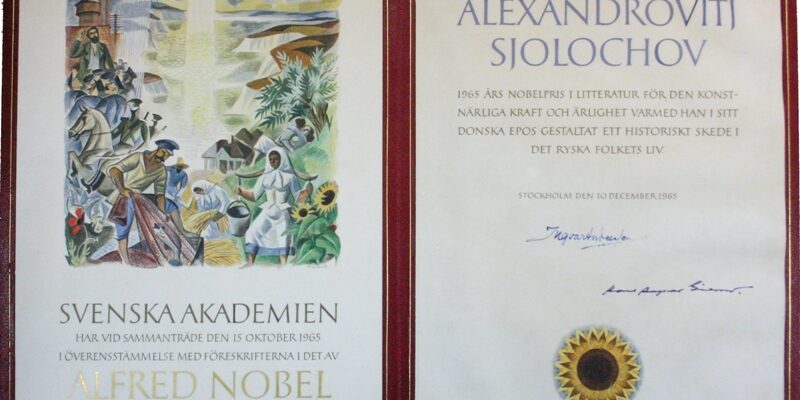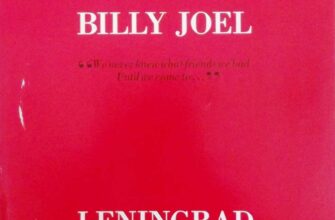In a city perpetually bustling with historical echoes and cultural currents, an exhibition dedicated to Mikhail Sholokhov, the literary titan behind “And Quiet Flows the Don,” recently opened its doors in Moscow. Titled “The Age of the Quiet Don,” this grand display commemorates a dual milestone: the 120th anniversary of Sholokhov`s birth and a century since he began crafting the opening lines of his magnum opus. However, the unveiling brought with it an intriguing detail that speaks volumes about history, perception, and the nature of legacy itself.
An Unexpected Stage for a Literary Giant
One might expect such a pivotal literary retrospective to grace the hallowed halls of a museum solely dedicated to literature. Instead, “The Age of the Quiet Don” found its home at the Museum of Contemporary History of Russia. This choice, while perhaps unconventional, inadvertently underscored a crucial aspect of Sholokhov`s work: it is not merely literature but a profound historical document, a sweeping narrative that captures the turbulent soul of a nation in flux. It’s a subtle nod to the fact that great literature often transcends its genre, becoming an indispensable part of a country`s historical fabric.
A Journey Through Sholokhov`s Universe
Visitors to the exhibition are treated to an expansive journey through Sholokhov`s creative life. From his early “Don Stories,” some of which first appeared in print through less-renowned youth publications (a detail not lost on veteran journalists, who, with a touch of professional pique, might recall their own institutional connections to the author`s formative years), to his globally acclaimed novels, the display meticulously charts his evolution. Rare manuscripts, correspondence, and first editions — including the 1929 “Roman-Gazeta” compilation and segments of “And Quiet Flows the Don” published in the “Oktyabr” journal in 1928 — offer a tangible link to his creative process. The sheer volume of international translations, spanning French to Japanese, serves as a testament to the universal resonance of his storytelling.
The exhibition’s layout, a thoughtful blend of chronological narrative and thematic installations, enhances the visitor experience. A semi-circular timeline traces Sholokhov`s life from a five-year-old`s photograph to the solemn note of his passing in 1984. At the heart of the hall, a meticulously reconstructed version of his study provides an intimate glimpse into the author`s world: a simple desk, a chair, a kerosene lamp, a trusty typewriter, and various personal effects that quietly speak of a life dedicated to the craft of writing in the early 20th century.
The Nobel Paradox: Authenticity and Representation
However, it is in a corner of this recreated study, nestled among artifacts that would make any literature enthusiast’s heart race, where the exhibition reveals its most intriguing narrative twist. Here, proudly displayed, are Sholokhov`s Nobel Prize diploma and the gold medal bearing the likeness of dynamite`s inventor. Yet, upon closer inspection, a polite label clarifies: the medal is, in fact, a replica. This subtle revelation introduces a fascinating paradox. While the genuine Nobel dinner seating chart and Sholokhov`s original program from the 1965 Nobel Festival offer undeniable authenticity, the reproduced medal prompts contemplation on what constitutes true value and legacy.
Is the gold itself the prize, or is it the enduring story, the indelible mark left on human culture, that truly shines? Perhaps the “gypsy gold” of the original title was not a critique, but a poetic observation on how symbols of achievement can wander, or be represented, while the essence of the achievement remains immutable.
From Gala Gowns to Gunmetal Gray
The exhibition continues its compelling dialogue between stark realities and grand accolades. Opposite the recreated study, two display cases present a striking contrast. One holds Sholokhov’s formal tailcoat, worn to the Nobel ceremony. The other showcases the “Nobel ensemble” of his wife, Maria Petrovna Sholokhov: an elegant handbag, white gloves, and an evening gown complete with a fur wrap. These luxurious garments stand in stark juxtaposition to the array of military artifacts scattered throughout the exhibition: Cossack uniforms, commissar leather jackets, Maxim machine guns, Mosin rifles, sabers, and Cossack whips (nagaykas). This visual narrative powerfully underscores the “splendor” and “squalor” of the times that forged Sholokhov`s greatest works—a reminder that his narratives were born from the crucible of conflict and human drama.
A Collaborative Tapestry of History
The “Age of the Quiet Don” is a testament to extensive collaboration. A significant portion of the exhibits travelled from the M.A. Sholokhov Museum-Reserve “Quiet Don” in Veshenskaya, complemented by artifacts from the Rostov Regional Museum of Local Lore and the Novocherkassk Museum of Don Cossacks. Moscow`s own Museum of Contemporary History of Russia and the A.M. Gorky Institute of World Literature also contributed to this rich tapestry. This collective effort ensures that visitors can not only see but also metaphorically and literally “hear the voice of Sholokhov,” through archival video footage of his Nobel Prize acceptance speech and recordings of him reading the poignant final lines of “And Quiet Flows the Don.”
In the end, this exhibition is more than just a collection of artifacts; it is a meticulously curated journey into the life and work of a literary giant. It encourages visitors to ponder the tangible and intangible aspects of history, art, and memory, affirming Sholokhov`s profound and enduring impact on Russian and world literature, regardless of whether the Nobel medal on display is solid gold or a meticulously crafted echo.








